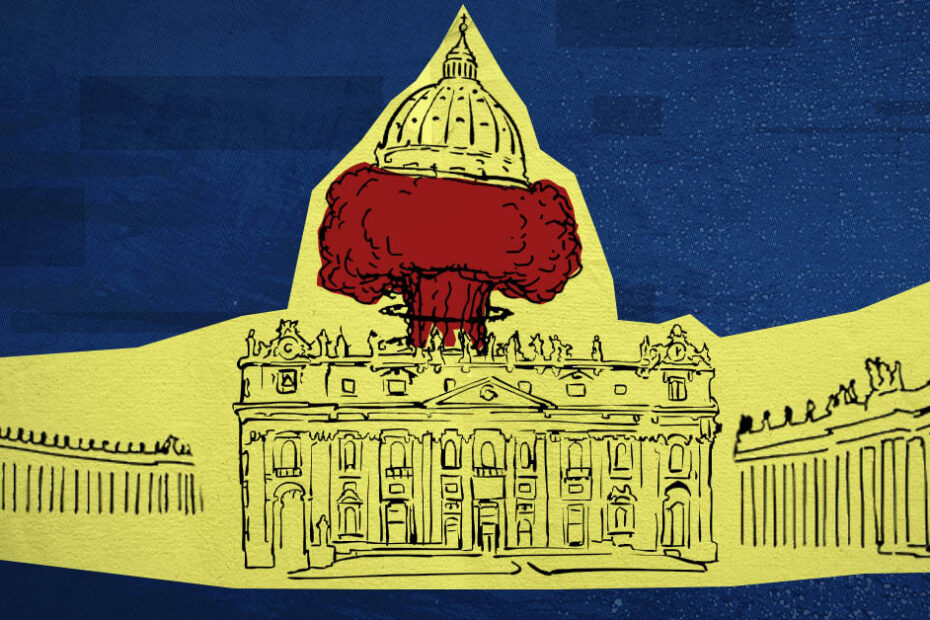By Judie Brown
The Congregation for the Doctrine of the Faith “has as its duty the promotion and safeguarding of Catholic faith and morals, and is currently competent to address the delict of sexual abuse of minors. The Congregation advises a diocesan bishop or religious ordinary as to the appropriate process for particular cases and may authorize corrective measures to be taken.”
This is how the Vatican glossary of terms defines the congregation.
Pope Francis refers to it as a dicastery, which is simply another word for congregation.
The most noted cardinal of the Church ever to guide this group was Cardinal Joseph Ratzinger, who later became Pope Benedict XVI. Under his leadership, the Congregation for the Doctrine of Faith was a stalwart defender of truth, offering clarity to otherwise confusing subjects.
In 2003 Ratzinger wrote of homosexual unions:
The Church teaches that respect for homosexual persons cannot lead in any way to approval of homosexual behavior or to legal recognition of homosexual unions. The common good requires that laws recognize, promote and protect marriage as the basis of the family, the primary unit of society. Legal recognition of homosexual unions or placing them on the same level as marriage would mean not only the approval of deviant behavior, with the consequence of making it a model in present-day society, but would also obscure basic values which belong to the common inheritance of humanity. The Church cannot fail to defend these values, for the good of men and women and for the good of society itself.
But recently a new teaching has emerged from the Francis papacy. Entitled Fiducia Supplicans, this document suggests that homosexual unions can be blessed but not condoned. But Cardinal Victor Manuel Fernandez, the prefect of the dicastery, has made it clear that he now sees the document as a failed attempt to clarify an impossible situation. He said, “I recognize that the reception of these documents requires time, and a serene and prolonged reflection.” He also stated, “What is important is that these bishops’ conferences are not holding a doctrine different from that of the declaration signed by the pope, because it is the same doctrine as always.”
However, in this instance, the congregation most often referenced as the credible source for Catholic teaching has committed a grave error. We are grateful, therefore, for Phil Lawler’s erudite analysis. He writes, in part:
This carefully crafted Vatican document gives liberal Catholic priests a way to show their sympathy for homosexual unions without actually contravening Church law. It even helps irresolute clerics, who might hesitate to bless same-sex partnerships, to go along, cautioning them against a stand “on the fixed nature of certain doctrinal or disciplinary schemes.”
Yet the DDF knows exactly how far to push its argument. By repeatedly saying that it does not intend a change in Church doctrine or discipline, the document ensures that many loyal Catholics will take that claim at face value, and even lash out at critics of Fiducia Supplicans. Never mind that informed people see it as ground-breaking. Never mind that critics of Catholic teaching are rejoicing. They are all wrong, according to the defenders of the Vatican statement. There is nothing in the document that directly contradicts the teachings of the Church.
If you are wondering why the Vatican would issue such a document at all, since it claims that there is no change in Catholic teaching, perhaps this quote directly from the Catechism will help in understanding that in fact what was once a clear teaching is now mired in confusion. The Catechism states: “Homosexual persons are called to chastity. By the virtues of self-mastery that teach them inner freedom, at times by the support of disinterested friendship, by prayer and sacramental grace, they can and should gradually and resolutely approach Christian perfection.”
This is the exact teaching, and it is based on the fact that “under no circumstances” can homosexual activities or relationships be approved.
We agree with Lawler that there was no need for a new Vatican statement on the matter unless the ground is shifting under the feet of some Vatican officials.
While we are perhaps considered simpleminded for underscoring a basic truth, we must set forth the truth that there is both good and evil. The Church guides us toward the good, but man—a descendant of Adam and thus a fallen creature—can and does create confusion. That truth makes the Vatican document a gambit—a calculated action—which in this case has accomplished nothing other than the creation of confusion.
